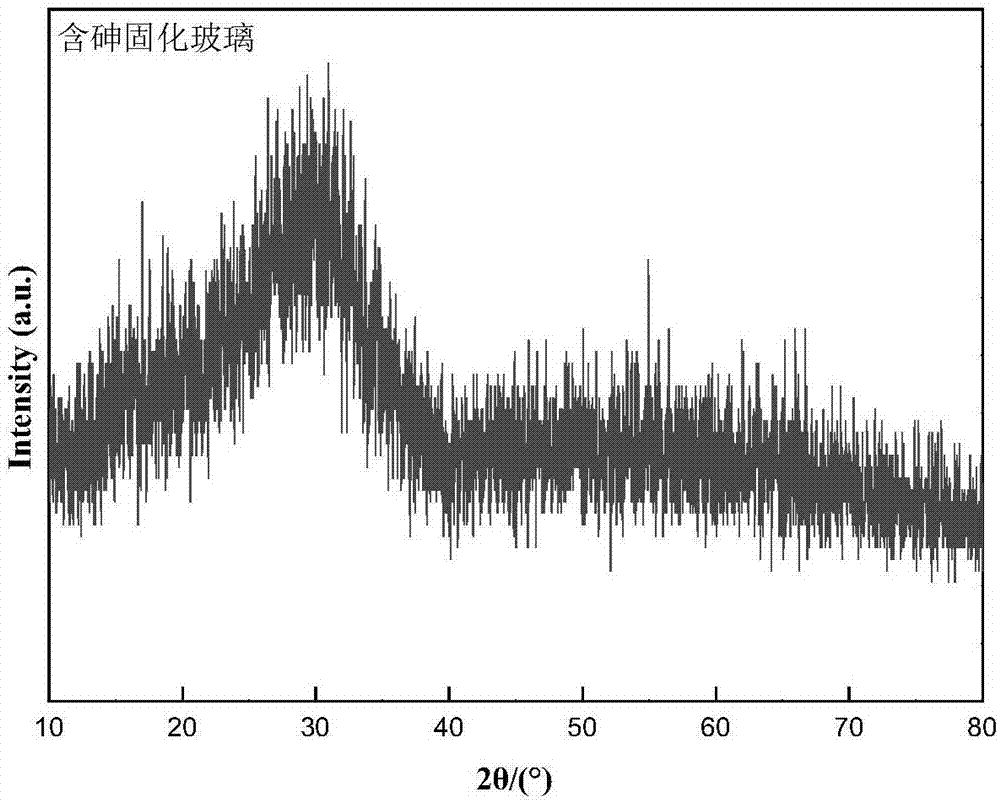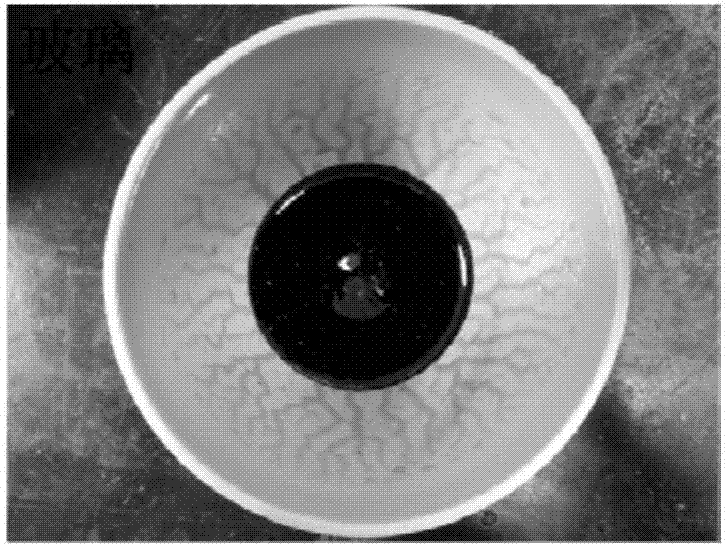Method for preparing arsenic-containing cured glass by arsenic-containing waste slag
A technology of waste slag and glass, which is applied in the field of preparing arsenic-containing solidified glass to achieve the effects of high hardness, energy saving, and uniform color
- Summary
- Abstract
- Description
- Claims
- Application Information
AI Technical Summary
Problems solved by technology
Method used
Image
Examples
Embodiment 1
[0024] Copper smelting slag, arsenic-containing waste slag, silicon-based materials and boric acid are used as raw materials, and the compositions of arsenic-containing waste slag, copper smelting slag and silicon-based materials are shown in the table below. Copper smelting slag, arsenic-containing waste slag, silicon-based materials and boric acid were ball-milled for 1 hour according to the mass ratio of 40:20:31:9, passed through 150 mesh and placed in a ceramic crucible, and the ceramic crucible was placed in a muffle furnace. Fire in an air atmosphere, keep the heating rate at 10°C / min to 1100°C, and keep it warm for 1h. After the reaction is over, the ceramic crucible is taken out and cooled in air to obtain arsenic-containing solidified glass. X-ray diffraction analysis was performed on the synthesized glass material, and the results are shown in the figure; at the same time, the leaching characteristics and compressive strength were tested using the American TCLP meth...
Embodiment 2
[0034] Copper smelting slag, arsenic-containing waste slag, silicon-based materials and boric acid are used as raw materials, and the compositions of arsenic-containing waste slag, copper smelting slag and silicon-based materials are shown in the table below. Copper smelting slag, arsenic-containing waste slag, silicon-based materials, and boric acid were ball-milled for 1 hour according to the mass ratio of 31:27:33:9, and the raw materials over 200 mesh were placed in a ceramic crucible, and the ceramic crucible was placed in a muffle furnace Fire in an air atmosphere, keep the heating rate from 10°C / min to 1150°C, and keep it warm for 1.5h. After the reaction is over, the ceramic crucible is taken out and placed in water for cooling to obtain arsenic-containing solidified glass. Meanwhile, US TCLP method and GB_T17671-1999 cement mortar strength testing method were used to test the leaching characteristics and compressive strength, and the results are shown in the table bel...
Embodiment 3
[0044] Copper smelting slag, arsenic-containing waste slag, silicon-based materials and boric acid are used as raw materials, and the compositions of arsenic-containing waste slag, copper smelting slag and silicon-based materials are shown in the table below. Copper smelting slag, arsenic-containing waste slag, silicon-based materials, and boric acid are ball-milled for 1 hour according to the mass ratio of 44:18:28:10, and the raw materials over 300 mesh are placed in a corundum crucible, and the corundum crucible is placed in a muffle furnace Fire in an air atmosphere, keep the heating rate from 10°C / min to 1100°C, and keep it warm for 1h. After the reaction, the ceramic crucible was taken out and cooled in liquid nitrogen to obtain arsenic-containing solidified glass. Meanwhile, US TCLP method and GB_T17671-1999 cement mortar strength testing method were used to test the leaching characteristics and compressive strength, and the results are shown in the table below.
[004...
PUM
 Login to View More
Login to View More Abstract
Description
Claims
Application Information
 Login to View More
Login to View More - R&D
- Intellectual Property
- Life Sciences
- Materials
- Tech Scout
- Unparalleled Data Quality
- Higher Quality Content
- 60% Fewer Hallucinations
Browse by: Latest US Patents, China's latest patents, Technical Efficacy Thesaurus, Application Domain, Technology Topic, Popular Technical Reports.
© 2025 PatSnap. All rights reserved.Legal|Privacy policy|Modern Slavery Act Transparency Statement|Sitemap|About US| Contact US: help@patsnap.com



